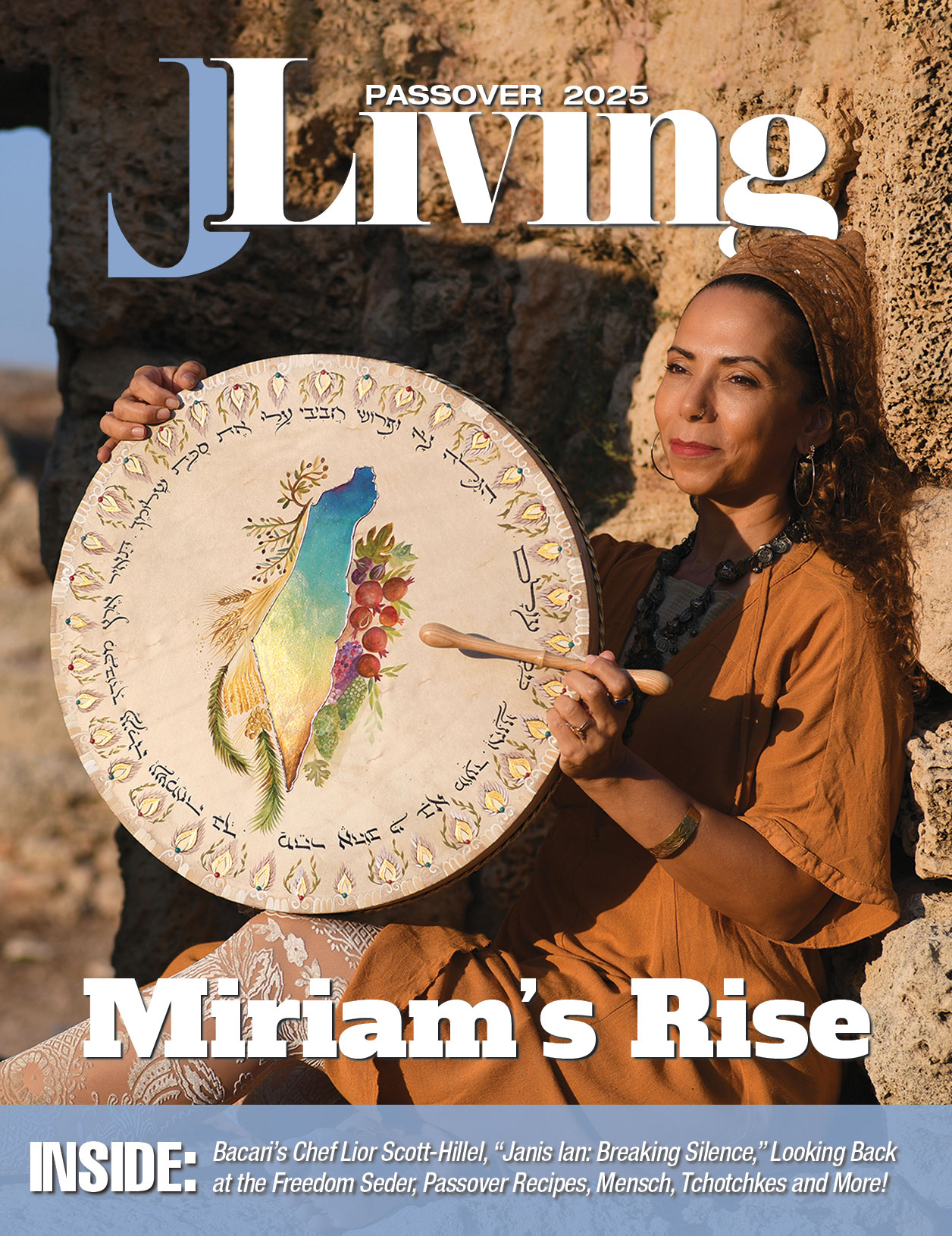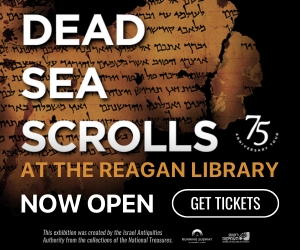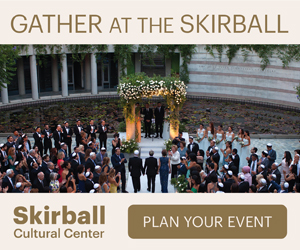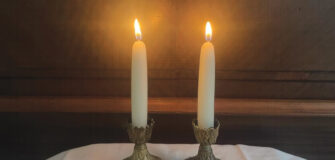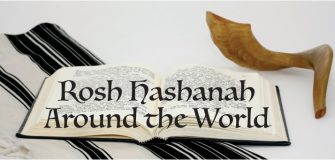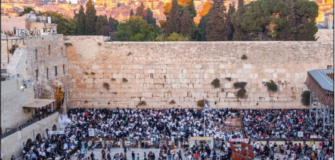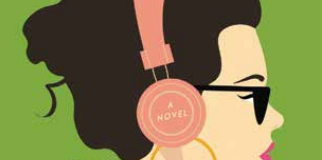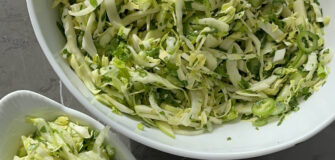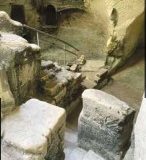The Skirball’s Menorah Collection
THe Skirball’s Menorah Collection
A staple of the Hanukkah celebration is lighting the candles on the Hanukkah lamp, also known as a menorah. Or a hanukkiah. Wait, which is it?
Technically, it’s both!
“Menorah” means lamp in Hebrew. A “hanukkiah” is a type of menorah. A hanukkiah holds eight candles (plus the helper candle, or shamash) which represent the eight nights that the oil lasted in the Maccabees’ menorah.
Hanukkiahs have certainly evolved since then, and are now available in all shapes, sizes, and colors, ranging from a standard silver lamp to an ark full of animals.

The simplicity of a hanukkiah is actually what allows for its diversity. All that a lamp needs to be a hanukkiah is nine candle holders; beyond that, there is room for an artist’s interpretation based on time period, lcation, or any other contributing factor.
The Skirball Center’s hanukkiah collection certainly displays the beauty of diversity. The Skirball Cultural Center in Los Angeles has a collection of over 200 menorahs—some modern and some that date back to the 16th century—which have been acquired throughout the years.
Many of the older European lamps were purchased in the 1920s and 1930s by the Hebrew Union College (where the Skirball was first established); seventeen lamps were given to the Skirball as part of the Jewish Cultural Reconstruction; about 60 lamps have been privately donated to the museum.
The Skirball leaves about 30 of these menorahs on permanent display as part of the exhibition called Visions and Values: Jewish Life from Antiquity to America. According to Sheri Bernstein, the museum’s director, these menorahs help represent the core theme of the exhibition and Hanukkah
itself: the light of freedom.
One of the most iconic lamps in the museum’s collection is Manfred Anson’s Statue of Liberty menorah, created for the statue’s centennial in 1985.
Anson, who immigrated to the United States years after fleeing Nazi Germany, collected Statue of Liberty memorabilia as a tribute to his new home. Anson then used a cast of a miniature souvenir to make nine candle holders resembling the Statue of Liberty. Important events in Jewish history are inscribed at the base of each holder.
This menorah “embodies the mission of the Skirball Cultural Center,” according to museum president and CEO Jessie Kornberg, which is to honor the Jewish experience and cultural values.
Another lamp in the collection also belonged to a United States immigrant. Shabdai Koder, along with other members his family, came to the United States in 1947. Although this golden menorah had been used by the Koder family for more than ninety years, Shabdai gifted it to the Skirball after he was inspired by a visit to the museum with his wife and daughter. The Koder menorah is oil-burning and made from hammered brass from Cohin, India. Koder originally arrived in Cochin in the 19th century because India provided Jews the opportunity to maintain their religious and cultural identity.


These lamps point to the diversity of Jewish experiences that exist throughout the world, according to Bernstein.
“The word Hanukkah means rededication and refers to the rededication of the temple after it was saved from destruction,” Bernstein said. “It harkens back to the original structure, which is why many of these lamps have an architectural feel to them.”
Several lamps in the collection are notable for their unique architecture. One such menorah depicts a bear climbing up an oak tree. This menorah, which is made from silver gilt, was produced in Poland in 1800 and is one of Bernstein’s favorites in the collection.
“I love that it has a textured trunk, lyrical branches, and beautifully rendered leaves and acorns from which these candle holders spring,” she said.
The bear is climbing towards a honey pot, which adds a meaningful layer to the lamp. Since honey symbolizes knowledge, the bear appears to be pursuing knowledge.
“The tree of knowledge and seeking learning are important pieces of Jewish tradition,” Bernstein said. “This lamp is not only very beautiful to look at but also a beautiful realization of the lessons and stories that are told in Judaica.”
One of the most prominent stories in Judaica is the tale of Noah’s Ark, which is portrayed in one of the menorahs on display. The Noah’s Ark menorah was made in New York around 1998 with metal and paint. It is part of the Skirball’s award winning Noah’s Art exhibit, a gift of Lloyd E. Cotsen.
Bernstein served as Project Director for the Skirball’s Noah’s Ark exhibit. Families can explore an eight-thousand square foot wooden ark that is filled with handcrafted animals from
recycled materials such as baseball mitts, mop heads, and rearview mirrors, according to the museum website. The Noah’s Ark exhibit features art from different cultures and time periods, similarly to the diverse array of menorahs in the Visions & Values exhibition.
“Both [Noah’s Ark and the hanukkiah collection] convey the message that diversity within community is a beautiful thing and that it is possible to honor tradition while also welcoming a variety of voices and perspectives,” Bernstein said.
Compare one of the collection’s most conventional lamps with one of its most playful. The Rothschild lamp commissioned by Baron Wilhelm von Rothschild in 1850 is the most traditional form of silver Hanukkah lamp. More recently, contemporary Los Angeles artist Peter Shire created a lamp in the form of a colorful cactus. These two menorahs are physically different yet they both provide light during the darkest time of the year—a symbol of hope that is central to the holiday of Hanukkah.
“The Skirball Center’s collection is a study of the balance between continuity and adaption,” said Bernstein. “For us, looking at the Hanukkah lamps is really a celebration of difference.”


